14 Ducks With Long Legs (With Pictures)
Long legs aren’t something most people associate with ducks — that trait is usually reserved for birds like flamingos, cranes, and storks. In the duck world, mentioning long legs might raise a few eyebrows, as the majority of ducks have short, stubby legs set far back on their bodies. However, there are some fascinating exceptions. A handful of duck species boast noticeably longer legs, which they use to wade gracefully through swamps, marshes, and wetlands. If you’re curious to know which ducks stand taller than the rest, here’s an overview of 14 duck species with impressively long legs.
- 1. Black-bellied Whistling Duck
- 2. Fulvous Whistling Duck
- 3. Indian Runner Duck
- 4. White-faced Whistling Duck
- 5. Plumed Whistling Duck
- 6. Lesser Whistling Duck
- 7. Spotted Whistling Duck
- 8. Wandering Whistling Duck
- 9. West Indian Whistling Duck
- 10. Cape Teal
- 11. Maned Duck
- 12. Radjah Shelduck
- 13. Ruddy Shelduck
- 14. White-backed Duck
1. Black-bellied Whistling Duck

I don’t think there’s a better duck to start with than the Black-bellied Whistling Duck. Its bright pink legs aren’t not only pretty but they’re also long, striking, and make this species instantly recognizable. Those long legs don’t just look elegant—they help it wade easily through shallow water and even perch on tree branches, which most ducks can’t do! It’s often found in wetlands and ponds, especially in the southern United States and Central America.
2. Fulvous Whistling Duck
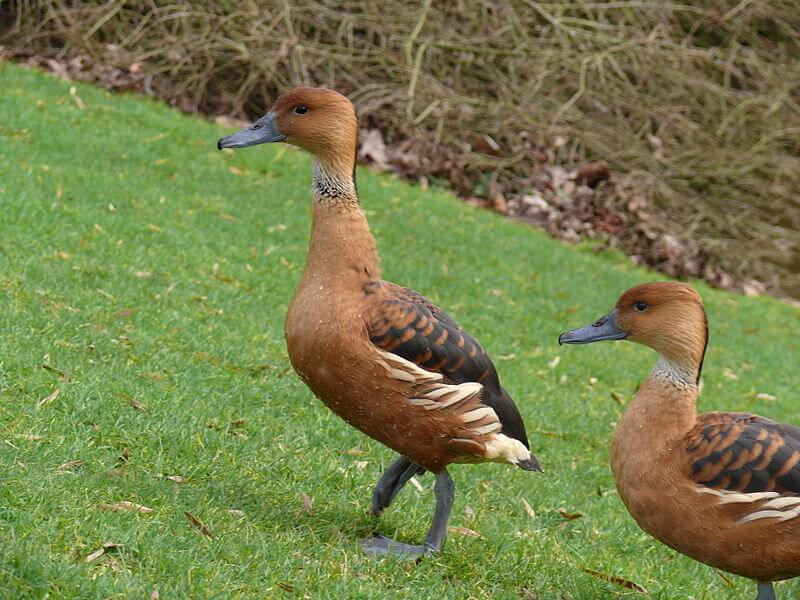
This warm brown duck has long gray legs that make it a confident walker—so don’t be surprised to see it strolling around rather than waddling. The Fulvous Whistling Duck loves rice fields, marshes, and shallow lakes where it can feed on seeds and aquatic plants. It’s a sociable bird too, often seen in flocks that whistle softly to each other as they fly or feed together.
3. Indian Runner Duck
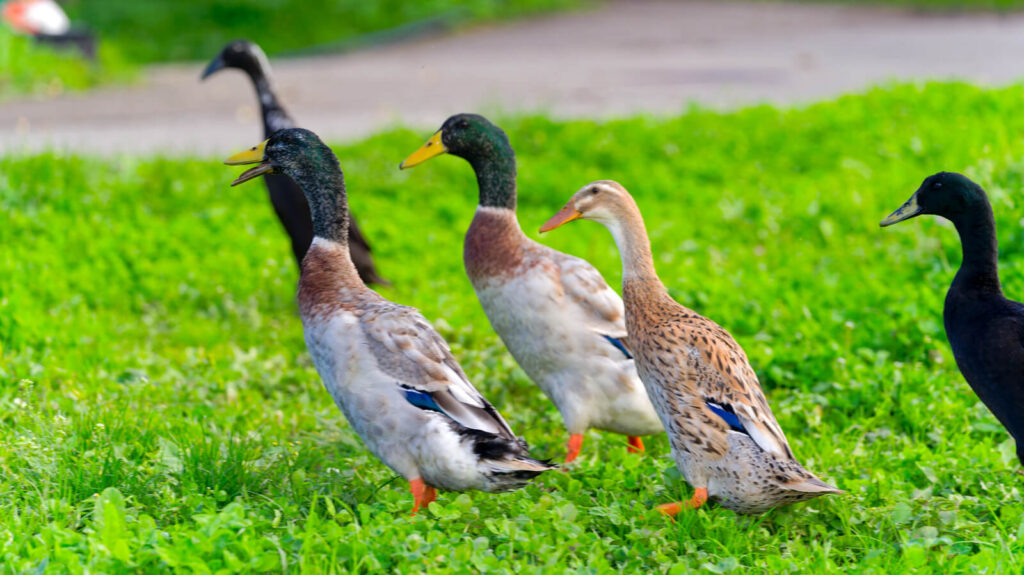
Among domestic ducks, the Indian Runner is truly one of a kind. Its legs are unusually long, and it stands upright like a penguin—so much so that it almost looks like it’s running rather than waddling. Bred originally in Southeast Asia, this duck is famous on farms for being an excellent forager, eating insects and weeds while dashing about on its long legs. Its comical stance and speedy walk make it a favorite among duck keepers and bird lovers alike.
4. White-faced Whistling Duck
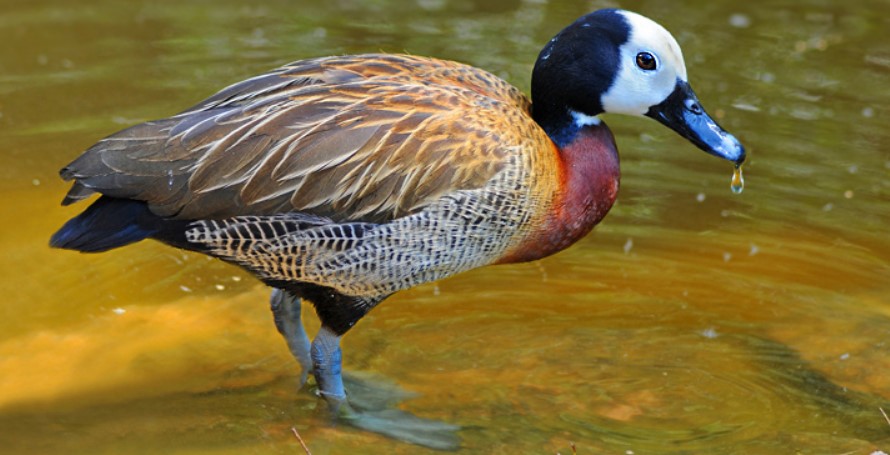
You can’t miss the elegant White-faced Whistling Duck with its tall posture and long dark legs. It prefers calm wetlands, lakes, and flooded fields across Africa and South America, often gathering in large, noisy groups. Its white face and whistling voice make it stand out in any flock. Those long legs help it move with ease through both water and grassy areas as it searches for seeds and small aquatic creatures.
5. Plumed Whistling Duck
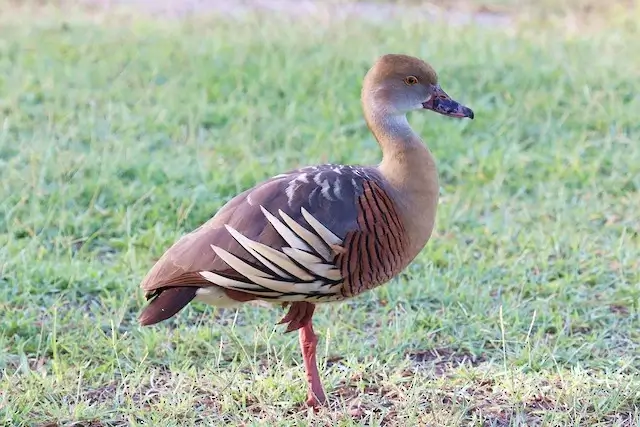
One of the most graceful of all the whistling ducks, the Plumed Whistling Duck shows off long, pink legs and fancy feather plumes that curve over its sides like streamers. Those tall legs help it stroll confidently across grassy wetlands and pastures in northern Australia. Instead of diving for food, it grazes gently on seeds and grasses.
6. Lesser Whistling Duck

Despite its name, there’s nothing “lesser” about its charm! The Lesser Whistling Duck has long gray legs that let it wade easily through ponds and flooded fields. Found across Asia and parts of Africa, it’s often seen floating calmly in small groups. This duck’s call is a sweet, two-note whistle that you might hear just before sunset as they take off in neat little flocks. It mostly feeds on seeds and aquatic plants, gliding gracefully across calm waters.
7. Spotted Whistling Duck
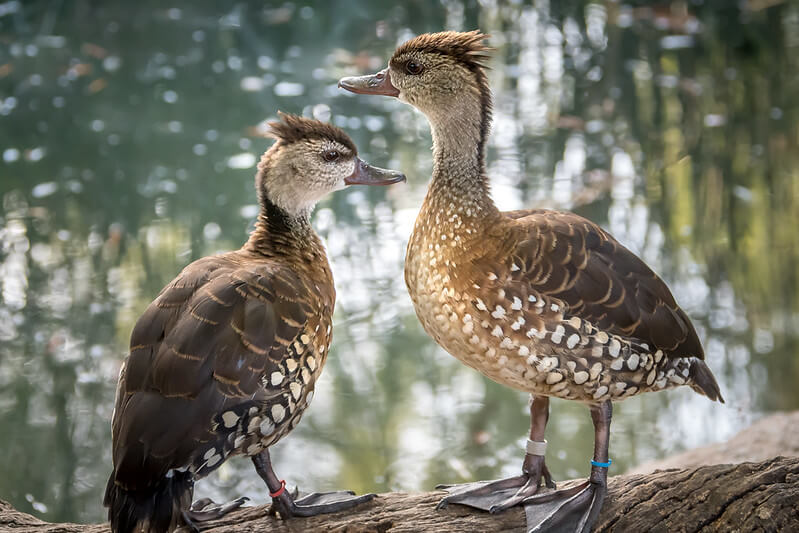
With a neat row of white spots along its sides and long dark legs, the Spotted Whistling Duck is easy to recognize once you’ve seen it. Native to northern Australia and New Guinea, this duck enjoys tropical forests and quiet lagoons. Its long legs come in handy for walking among reeds and shallow pools as it feeds on grasses and small aquatic creatures. It’s a shy bird, usually staying close to cover, but its soft, whistling call gives it away to patient birdwatchers.
8. Wandering Whistling Duck

True to its name, the Wandering Whistling Duck is always on the move, roaming between wetlands across Australia, Indonesia, and New Guinea. Its long, dark legs make it a skilled wader, especially in deep marshes where other ducks might struggle. You’ll often find it gathered in large flocks, resting during the day and feeding at dusk. Its diet includes grasses, seeds, and water plants.
9. West Indian Whistling Duck
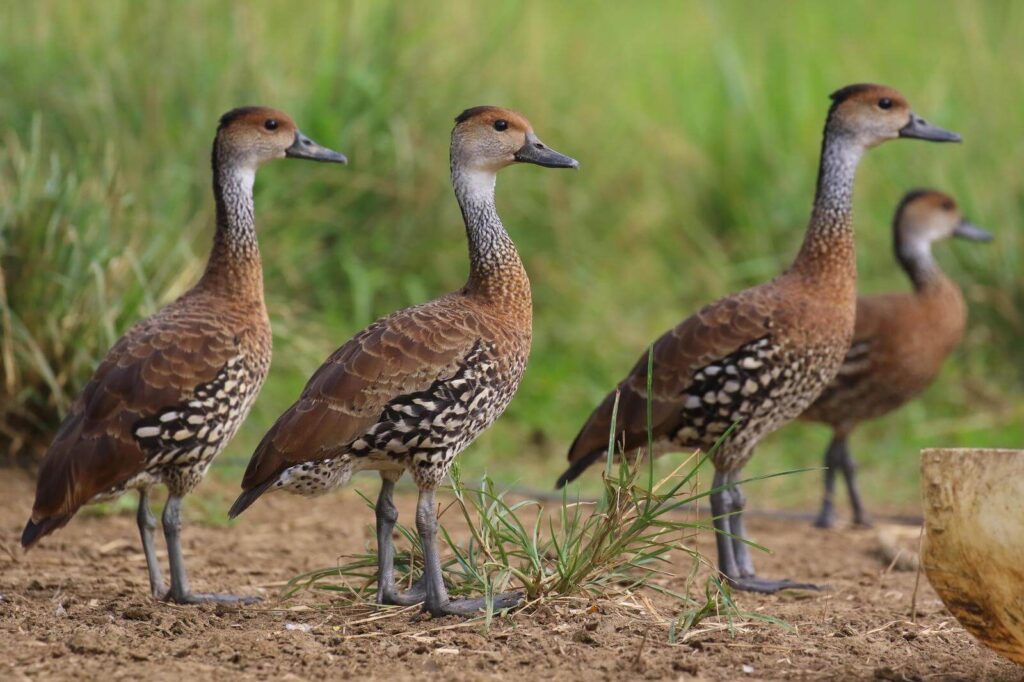
Tall, elegant, and long-legged, the West Indian Whistling Duck is the Caribbean’s special treasure. It has dusky brown plumage, a pale belly, and strong legs perfect for walking through mangroves and shallow lagoons. Sadly, it’s considered one of the rarer whistling ducks due to habitat loss, but conservation efforts are helping it recover. It feeds mostly at night on seeds and plants, resting during the day in shaded spots.
10. Cape Teal
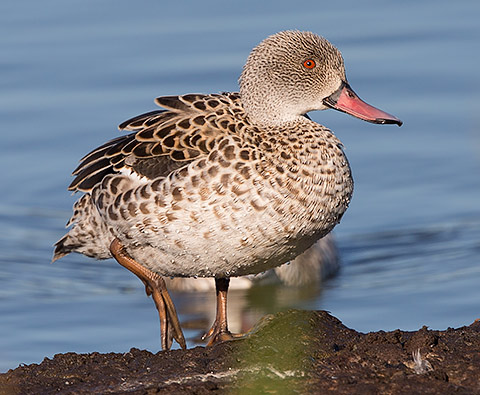
The Cape Teal is a lovely duck from southern Africa, often seen quietly paddling or wading in shallow lakes and pans. Its legs are longer than most dabbling ducks, helping it move gracefully through muddy shallows while feeding on tiny crustaceans and aquatic plants. The soft pinkish bill and spotted chest give it a gentle look. Though it can fly well, the Cape Teal prefers calm waters and open spaces, often in pairs or small groups.
11. Maned Duck

Also known as the Australian Wood Duck, the Maned Duck has long, strong legs that make it an expert walker. You’ll often spot it grazing on grass like a goose rather than swimming like other ducks. The male has a dark, mane-like crest on its head—hence the name. Found across Australia, it enjoys farm dams, park ponds, and grassy wetlands. Its gentle calls and calm nature make it a familiar sight to many birdwatchers down under.
12. Radjah Shelduck
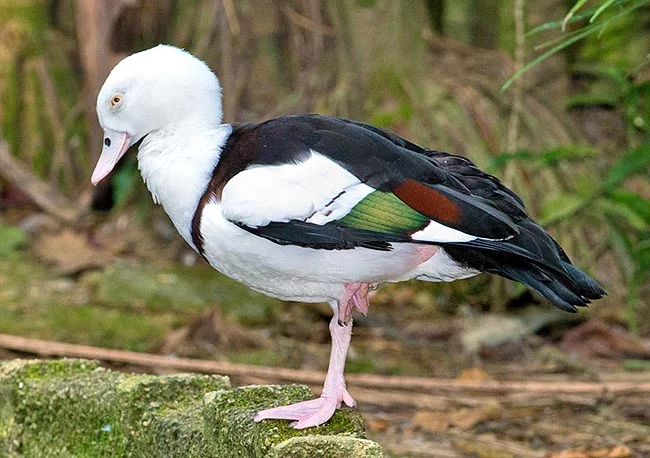
With its striking white body and chestnut bands, the Radjah Shelduck stands out beautifully along northern Australia’s tropical coastlines. Its long, pink legs let it stroll elegantly through tidal flats and shallow mangroves. It feeds mostly on small shellfish and insects in the mud. Often quiet, it’s most vocal at dusk, when its soft, honking calls echo across the water.
13. Ruddy Shelduck

A bold orange-brown duck with long dark legs, the Ruddy Shelduck looks like it’s wearing a golden coat. It prefers open wetlands and lakes across Asia and eastern Europe. Those long legs come in handy for wading and foraging along muddy shores. Unlike many ducks, it nests far from water—sometimes in rocky crevices or even old buildings.
14. White-backed Duck

At first glance, you might not notice its long legs, because the White-backed Duck loves to hide among water lilies and reeds. But those legs are surprisingly strong, perfect for diving and swimming underwater—something few ducks do so well. Found in sub-Saharan Africa, this small, secretive bird gets its name from the pale feathers on its back. It prefers quiet ponds with thick vegetation, feeding on water plants while staying almost invisible to predators.
